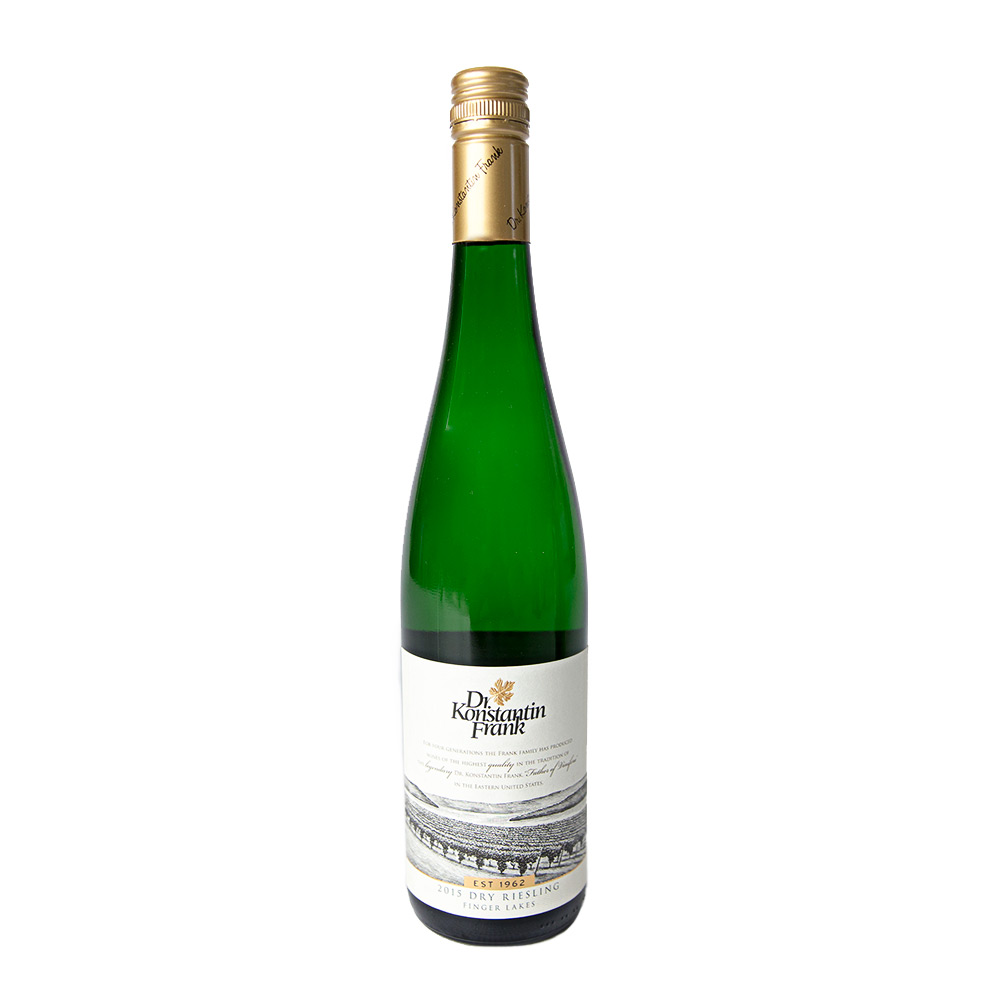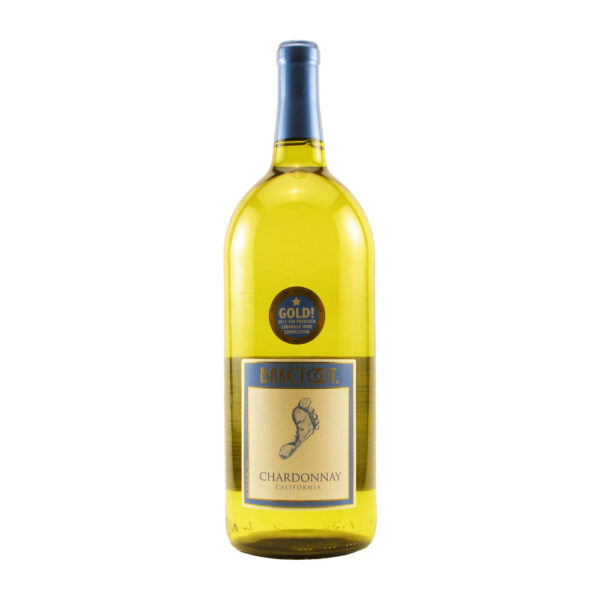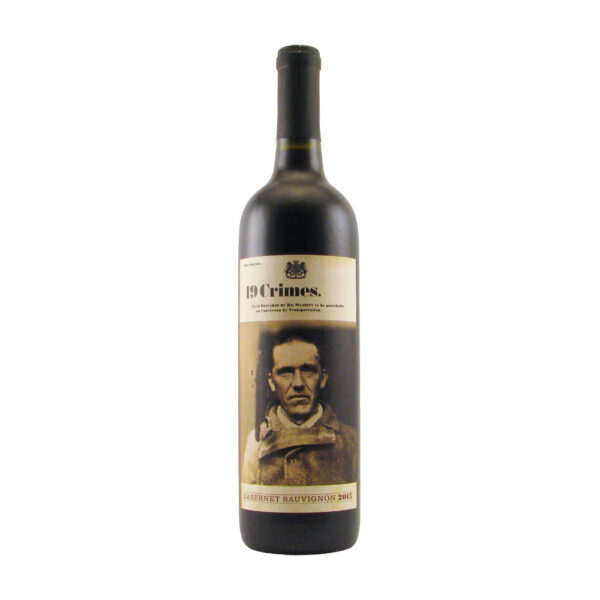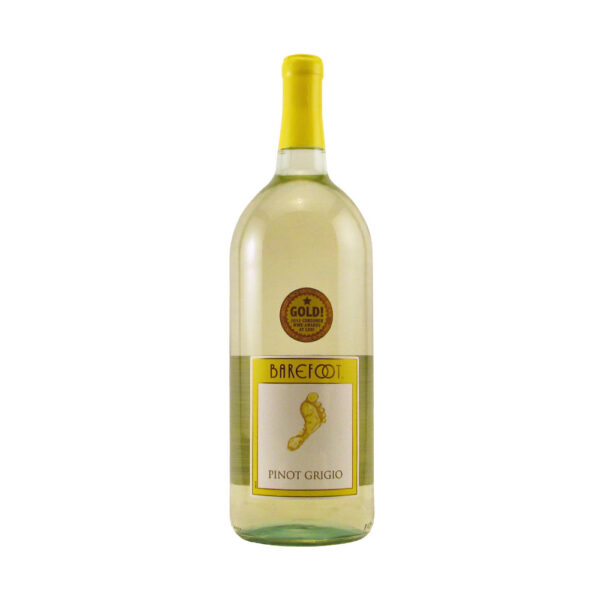Description
Dr Konstantin Frank Dry Riesling 2015 750ml
Dr. Frank Dry Riesling is crafted from the classic German grape, now prominent in New York’s Finger Lakes. This Riesling is grown on the steep slopes of deep glacial lakes which moderate the temperatures throughout the year.
The winery has been among the most prestigious in the Finger Lakes wine region of New York State.
Aromas of lavender, pear, and orange blossom to start. Thereafter, a vibrate mouthfeel reveals rich, fruity flavors of oranges, apple, pear and a zesty fruit finish.It opens with a mild lime bouquet with hints of wet stone and Anjou pear.
On the palate, it’s best described as a medium-bodied wine with a slightly sweet remanence, while very appealing. With a very tasty flavor profile of pears, the finish remains semi-dry and its flavors linger for quite some time.
Dr. Frank’s Wine Cellars is proud to have an international team of winemakers. This allows a variety of experience to create such a unique and perfect variety of wines from California, France, Germany, and Australia. Each generation of the family focuses on world-class wines while striving to provide the best for wine enthusiasts.
Dr Konstantin Frank Dry Riesling 2015 Notes To Your Senses:
- TASTE: Medium bodied, slightly sweet & very appealing with mandarin orange, apple, and a zesty, semi-dry fruit finish
- AROMA: Orange blossom, lavender, and pear
- APPEARANCE: Pale yellow
- ABV: 12.5%
- PAIRING: Light spicy foods or dessert
Riesling:
A white grape originating from Rhine which is a region of Germany. This is a very aromatic, perfumed grape with a flowery aroma. It’s high acidity and can be used to make semi-sweet, sweet, dry, and sparkling wines. In cool climates, Riesling tends to have apple and tree fruit notes with, of course, acidity balanced with sugar. Peach, citrus flavors are more likely to be apparent in warmer regions.
This type of wine grape has a lot of history, dating all the way back to the 15th century! The earliest reference is said to be from 1435 when the high noble Count John IV in Germany stored and sold Riesling for 22 shillings.
Often, Riesling is consumed while it’s young when it’s fruity and aromatic of citrus fruits, honey, rose blossom. It has a refreshingly crisp taste due to the high acidity. Don’t fret if you’ve had it stocked for a while, this high acidity and range of flavors allow it to be aged for an extended period of time.
The most expensive wines are made as late harvest dessert wines. This occurs by letting the grapes hang on the vines longer than normal picking time. As evaporation is removed from the fungus Botrytis cinerea or by freezing (like ice wine), the wine offers very rich layers on the palate.
Red Riesling is a very rare version. It’s a red-skinned clone of Riesling, but not a dark-skinned clone. Therefore, it’s a white wine grape. Even though it’s considered a Red Riesling, some experts think the opposite. It may be a forerunner of White Riesling. These are grown in Germany and Austria. Also, “Red Riesling” is used as a synonym for red-skinned Traminer grapes, to make it even more confusing for the sommeliers in training.
White Wine:
White wine is made without the skin of the grape and produced through a method called alcohol fermentation. Also, the majority of white wines are lighter and have a crisper, more citrusy flavor compared to red.
It’s best to serve white wine in glasses with a larger bowl so that bold aromas and flavors emerge as they mingle with oxygen in the air. Many wine glass manufacturers have added a hint of green or blue feet to wine glasses as it flatters white wine and helps emphasize the separation between the glass and wine. Traditionally speaking, white wines are served before reds, while younger wines should be served before older vintages.
In addition, due to white wine’s aroma, acidity and ability to soften meat and deglaze cooking juices, white wines are often used in cooking. Sweet wine goes well with sweet and savory dishes to mitigate the heavy sugar and stimulate the fruitiness.
If you’re a sparkling wine lover at mealtime, you’re in luck, it can be taken any time during the meal because of its diversity. By choosing a sparkling wine, it allows the retention of the same wine from the beginning to the end of the meal.
Making it a must have in any household!
Master Sommelier Little Known, Big Facts:
- The color of wine depends on the fermentation extracts using skin, like Red wine as compared to white wine, leaving the skin behind
- The oldest bottle of wine dates back to A.D. 325; it was found in Germany inside two Roman sarcophaguses
- The worst place to store wine is usually in the kitchen because it’s typically too warm, in refrigerators, their warmest setting can be too cold
- Richer heavier foods usually pair well with richer, heavier wines; light wines pair with lighter foods
- Generally, a vintage wine is a product of a single year’s harvest, not when the wine is bottled
- A “dumb” wine refers to the lack of odor while a “numb” wine has no odor and no potential of developing a pleasing odor in the feature
- If a server or sommelier hands you a cork, don’t smell it, look for the date or other information ( mold, cracking, or breaks)
- Tannin is a substance that tingles the gums when you indulge your palate with a sip of wine, it’s an excellent antioxidant
- Smell is by far the most important sense when it comes to drinking wine
- Wine was first developed in Mesopotamia, not France
- French wines are labeled following the soil on which they are produced, not according to the grape used
- When chilling wine, adding salt to ice will cool it down faster
Warnings:
You must be 21 or over to purchase this product
Instructions:
Serve lightly chilled or at room temperature






Reviews
There are no reviews yet.